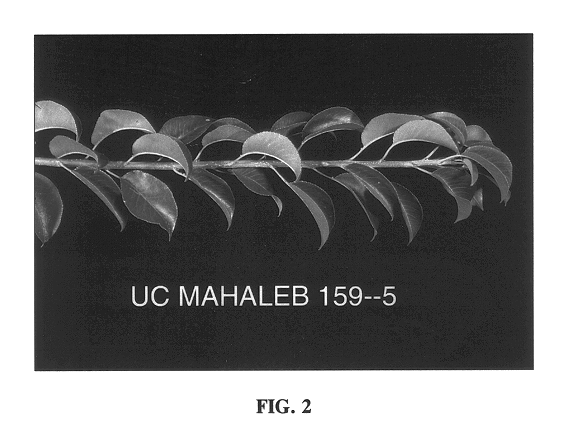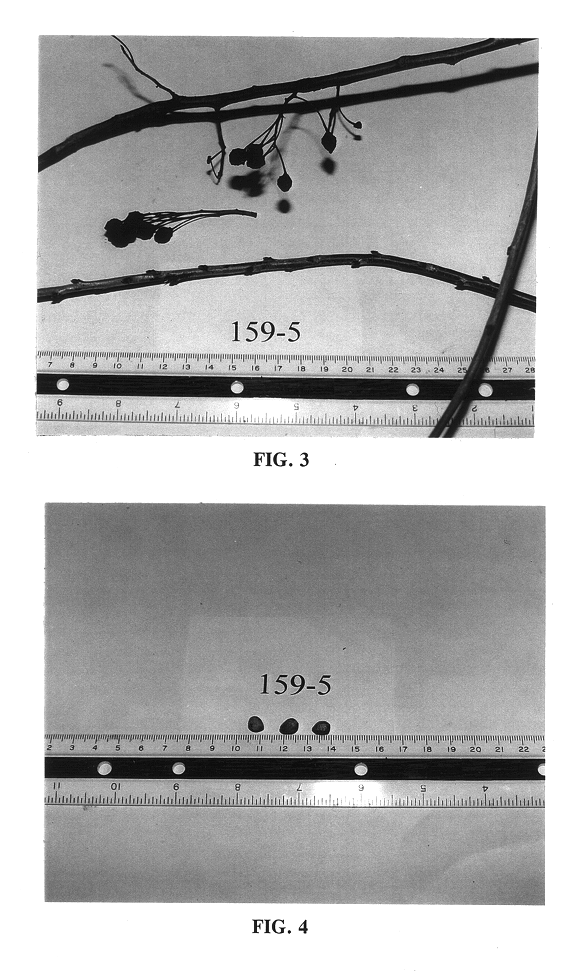Mahaleb rootstock named `UCMH 59`
a technology of mahaleb rootstock and rootstock, applied can solve the problems of reducing the field performance of some cherry trees, reducing the reliability of mahaleb rootstocks in the past, and reducing the success rate of mahaleb rootstocks in the field of mahaleb rootstocks,
- Summary
- Abstract
- Description
- Claims
- Application Information
AI Technical Summary
Benefits of technology
Problems solved by technology
Method used
Image
Examples
Embodiment Construction
The following is a detailed description of the new cultivar. The tree was grown at the Experimental Orchards of the University of California at Davis, Calif., U.S.A. Color designations are presented with reference to the "Dictionary of Color" by Maerz and Paul, First Edition (1930). Tree: Size.--More vigorous than the `UCMH 55` and `UCMH 56` cultivars. An eight year-old tree of the `UCMH 59` cultivar that has undergone some pruning commonly will display a height of approximately 4 meters and a width of approximately 3 meters. Trunk girth at 30 cm above the soil line commonly will possess a cross-sectional area of approximately 400 cm.sup.2. Growth.--Spreading, with shoots in the upper canopy being upright or perpendicular to the ground and shoots of varying age in the lower canopy being very pendulous. Wood.--Both the current season and the previous season wood is fine and commonly approximately 0.5 to 1 cm in diameter. Bark.--Possesses a rough raised surface and an Iron grey (24 A ...
PUM
 Login to View More
Login to View More Abstract
Description
Claims
Application Information
 Login to View More
Login to View More - R&D
- Intellectual Property
- Life Sciences
- Materials
- Tech Scout
- Unparalleled Data Quality
- Higher Quality Content
- 60% Fewer Hallucinations
Browse by: Latest US Patents, China's latest patents, Technical Efficacy Thesaurus, Application Domain, Technology Topic, Popular Technical Reports.
© 2025 PatSnap. All rights reserved.Legal|Privacy policy|Modern Slavery Act Transparency Statement|Sitemap|About US| Contact US: help@patsnap.com



